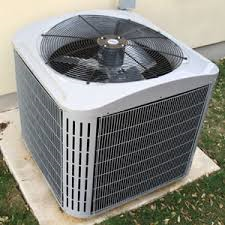Heat Pumps
Easy On That Stat. In heating mode – only raise thermostat a few degrees at a time. If your thermostat is set several degrees higher than the indoor temp (usually 2-3 degrees), then the thermostat will automatically turn on the auxiliary heat source. Auxiliary, or Back up heat can be a water heat coil in the ductwork, a separate furnace, but many times straight Electric Heat. Electric heating elements usually can range any where from 5kw – 20kw, which is equivalent to your electric oven and your clothes dryer running at the same time. So be careful when adjusting that thermostat.
Keep Your Coils Clean. Maintaining sufficient airflow across both the indoor and outdoor coils is crucial to maintaining high efficiency and long life expectancy from your heat pump. Do Not Block Air Vents. Keep as many of the supply registers open as possible. If you have wall registers in the walls that serve as returns then you will want to open the bottom and close off the top in the winter. Then switch them in the summer.
Try To Use The Sun. Opening certain drapes or blinds over windows on the south side of your home can certainly help with heating during the winter months. Make sure that you cover those windows once the sun goes down, or any gain in energy will certainly be lost.
Power Is Out? Even though this tip may not help you stay warm in the event that your power goes out in the middle of the winter, it can certainly help extend the life of your outdoor unit, in particular your compressor. Very few homeowners know what exactly takes place inside of their outdoor unit, which is ok. Every component has its job and must be working correctly for the system to effectively heat the building. The one component I want to discuss now is the ‘Crankcase Heater’. What a crankcase heater does is heat the oil at the bottom of the compressor by means of a small strip of resistive wiring at the compressor base. This is done for a few reasons, first to lower oil viscosity and help the compressor start in extremely cold temperatures, and second to prevent the refrigerant inside of the system from absorbing the oil and cause a lack of oil at the bottom of the compressor, and also prevents the refrigerant vapor in the compressor from condensing and damaging the compressor. If the heat pump was to try to start at this time, the compressor could potentially seize do to mixed liquid refrigerant and oil, and because a compressor should only compress vapor not liquid refrigerant or oil. It is similar to running a car engine without any oil in it. Not good. So next time the power goes out for extended periods in the winter, go ahead and switch that thermostat to Emergency Heat to allow the Crankcase Heater to warm the compressor before starting when the power does come back on. 
